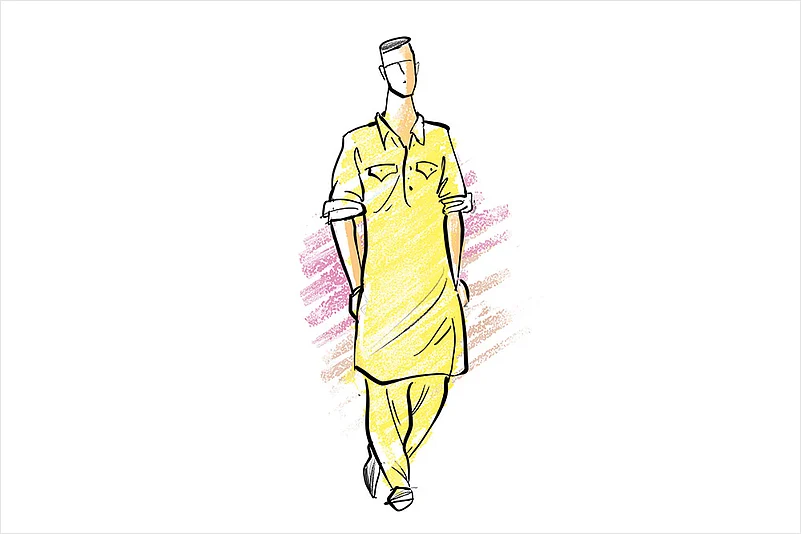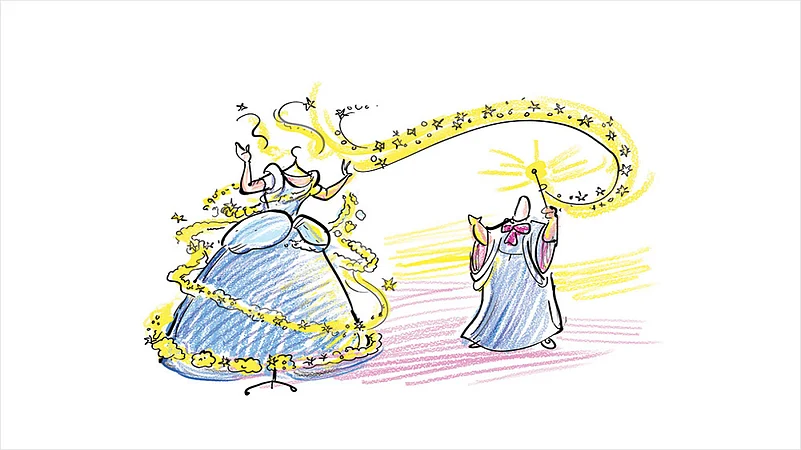Dead Clothes: The fashion cycle can be compared with ancient agricultural festivals that marked the change of season—fashion is always constituted by seasons—festivities of death and renewal. So much so that every new garment, once worn, already begins to die. This explains why old fashions resurface. I may occasionally don a shirt reminiscent of a bygone trend, but not without the necessary magic-ritual to bring it back to life. At times, this may involve dipping the garment vigorously at the banks of a river, or merely the performance of a ceremony akin to what a newborn might receive. But more often than not, the passing of time itself revives the long-dead garment, by virtue of a tiger’s leap into the past, thereby bringing back to the streets fashion that may have died, in some instances, prematurely.

Mannequin: Contrary to what is commonly understood, a mannequin is not a mere (plastic) doll upon which garments are hung, as if on a hanger. Mannequins are bodies that, by virtue of their splendour and animation, breathe life into cloth. It was Charles Frederick Worth, the grand courtier, who replaced a wooden doll with a human model. Often, however, these human models conduct themselves as if they were mere wooden or plastic dolls, without life or intelligence.
Metamorphosis: Fashion’s seduction must rely on its powers to immediately transform, something we are already familiar with as children. The wolf—who is in fact, a paedophile—disguises himself as little red riding hood’s grandmother by virtue of his dress, and the story of Cinderella does not merely express the dreamscape of the persecuted. The fairy, by a mere stroke of a magic wand, changes Cinderella’s clothes immediately; what society considered to be a pestilence, a servant girl lying in the ashes is now all of a sudden by virtue of a flux in attire, adored. There is nothing as transformative as putting on, or for that matter removing, clothes. Elsa Schiaparelli, the surrealist fashion designer, knew she was unconventionally attractive and always felt the transformative magic of a dress, a dress that could change her from ugly duckling to swan. “Nobody knew how I would appear. Sometimes I lead fashion. At other times, wearing my ordinary clothes, I appeared like my own ugly sister.”

Paper Clothes: Paper clothing enjoyed a brief vogue in the 1960’s. Paper suits and underwear for women were cheap and disposable. Much aligned with the ideas of Italian futurists, material that did not last, that did not endure, was the material of the future, clothes that one could throw in the garbage after a long, lonely day.

Pathani Suit: A kurta in standing or regular collar, paired with a loose shalwar or any other loose bottom-wear. They are also never really made completely in cotton, but in a sort of ‘alloy’ cloth, a mixture of various fabrics, allowing for the cloth to not get crushed easily. As a child, I was so fat none of the clothes one found in ready-made stores would fit. As a result, my mother got tailormade Pathani suits for my fat body. Whenever the extended family visited, I would entertain them in my Pathani suit, singing songs from movies. The suit would also feature as a costume later on in my life, and, towards the end of it, would become the only thing I would wear.
ALSO READ: Wanted! A Desi Model For Fashion Education

Pattern: A pattern is an arrangement of lines or shapes, especially a design in which the same shape is repeated at regular intervals over a surface. Often, the floral patterns on her kaftan would linger on her skin, long after removing the garment.

Quilt: A quilt is a multi-layered textile, traditionally composed of two or more layers of fabric or fibre. It is a piece of soft cloth large enough to either cover or to enfold a great portion of the sleeper’s body. A young, grieving seamstress who suddenly lost her husband to a heart attack while he was riding his bicycle to work, took all his old clothes—shirts, trousers, jackets—and stitched for herself a quilt to keep warm at night.

Uniform: Distinctive clothing worn by members of the same organisation or by children attending certain schools. In Robert Walser’s novel about a mysterious boarding school, Jakob von Gunten, Jakob likes to wear uniforms because even though they make the students look alike and essentially bound and unfree, the uniforms themselves are beautiful and Jakob likes to slip into them. At any rate, Jakob contends, it is far better than having no uniform and being compelled to wear shabby, torn clothes. Jakob also never really knows what to wear and wearing a uniform frees him of that burden. Hermann Broch, in his Schlafwandler, contended, “A uniform provides its wearer with a definitive line of demarcation between his person and the world. Closed up in his hard casing, braced in with straps and belts, he begins to forget his own undergarments and the uncertainty of life.”

Veil: When she was low and felt the world was being inordinately unkind to her, she would look around for the emergence of new, fresh retail: shopping malls, minor arcana. Her husband, the late Nawab, had left her with as much money as few friends. Cloistered and sheltered in an ancestral home ridden with portraits of her ancestors, her friends would always try to guess what kind of family resemblances there may be. The old Begum Sahiba, who grew up in the palace walls of a crumbling empire, was now safely settled in a luxurious but nonetheless civilian home in a posh part of town. For months, she had been listening to rumours of the construction of a new mall, one that was not only intended to be large but also well designed—suitable for young children in order to play—the latter of which the Begum did not care about. Being childless, she filled and measured her life in shopping bags, whenever she felt lonely and sad, buying clothes ranging from Zara to Alaia. Even though she was not particularly fond of sweets, she bought baklava, kaju katli, pain au chocolat for her neighbours, friends who never knew how to return these kindnesses. The Begum Sahiba indulged their appetites. She made it a point to invite to her house—something which developed in some respect to a kind of obsession—obese and by and large unhealthy people; she insisted on presenting them with lavish meals, as a sort of tease.
The Begum Sahiba was not particularly attractive but she never failed to understand the transformative power of a dress, and had lately even indulged in plastic surgery: She enlarged her lips, lifted her cheekbones and got a successful nose job—what more could a mere face handle. She, however, was content with her small breasts and rear, both of which were always anyway covered by an abaya. With the help of just the right eyeliner, lipstick and rouge, the perfect veil, she would stroll across the avenues of the newly-built mall, barely recognised.
(This appeared in the print edition as "Stylopedia, 2021 edition")
ALSO READ
Gaurav Monga is a writer and teacher from New Delhi
















